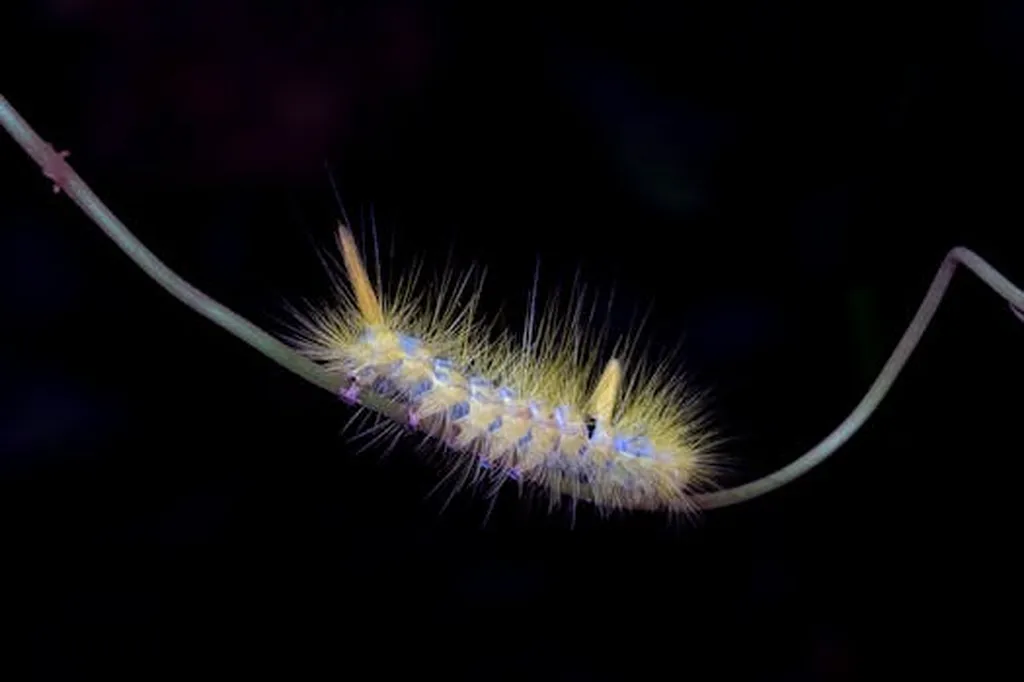In the rapidly evolving world of smart agriculture, the need for efficient and accurate pest detection has never been more critical. Traditional methods often fall short due to their computational complexity, making them ill-suited for real-time applications. However, a groundbreaking study published in *Scientific Reports* (translated from Chinese as “Scientific Reports”) offers a promising solution. Researchers, led by Ping Yu from the School of Computer Technology and Engineering at Changchun Institute of Technology, have developed DGS-YOLOv7-Tiny, a lightweight pest detection model specifically designed for edge computing environments.
Edge computing, which processes data locally on devices rather than in the cloud, is becoming increasingly important in agriculture. It reduces latency and bandwidth usage, making real-time pest detection feasible. “Our goal was to create a model that could operate efficiently on edge devices while maintaining high accuracy,” Yu explained. The DGS-YOLOv7-Tiny model achieves this by incorporating several innovative features.
One of the key advancements is the Global Attention Module, which enhances the model’s ability to aggregate global context. This improvement is particularly beneficial for detecting small objects, such as pests on tomato leaves. “By focusing on the global context, we can better identify and classify small pests, which is crucial for early detection and prevention,” Yu noted.
The model also employs a novel fusion convolution called DGSConv, which replaces standard convolutions. This substitution significantly reduces the number of parameters while preserving detailed feature information. Additionally, the researchers replaced Leaky ReLU with SiLU and CIOU with SIOU to improve gradient flow, stability, and convergence speed in complex environments.
The results are impressive. DGS-YOLOv7-Tiny boasts 4.43 million parameters, 10.2 GFLOPs computational complexity, and an inference speed of 168 FPS. It achieves 95.53% precision, 92.88% recall, and 96.42% [email protected] on the tomato leaf pest and disease dataset. These metrics demonstrate that the model delivers faster inference and reduced computational requirements while maintaining competitive performance.
The implications for the agriculture sector are substantial. With a model like DGS-YOLOv7-Tiny, farmers can implement real-time pest detection systems that are both efficient and accurate. This technology can lead to early intervention, reducing crop damage and increasing yields. Moreover, the reduced computational requirements make it accessible for deployment on edge devices, which are often more cost-effective and scalable than cloud-based solutions.
Looking ahead, this research could shape the future of smart agriculture by making advanced pest detection more accessible and efficient. As edge computing continues to grow in importance, models like DGS-YOLOv7-Tiny will play a pivotal role in enabling real-time, data-driven decision-making in the field. The study, published in *Scientific Reports*, underscores the potential of lightweight, efficient models in transforming agricultural practices and improving food security.
In the words of Ping Yu, “This is just the beginning. We are excited about the possibilities that DGS-YOLOv7-Tiny opens up for the future of smart agriculture.” As the field continues to evolve, the integration of advanced AI models like this one will be crucial in meeting the challenges of modern agriculture.

